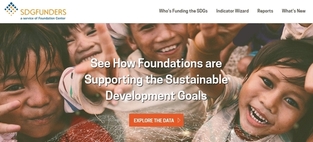Terms of Engagement Long-Term Grants Require Trust
Trust is a paramount challenge between funders and indigenous communities. For the communities, long, often ugly, histories with dominant cultures make it more difficult to trust ‘outsiders.’ For funders, it may be harder to receive the type of communication and reporting that they expect. To build the trust necessary to meaningfully partner, those with experience in these communities advise thinking in the longest terms possible. “Indigenous groups are often working on systemic and cultural change that can’t be achieved in a year,” noted Jennifer Barry, director of development of the Mexico-based funder Semillas. But even those with long-term commitments to directly funding indigenous groups often start with smaller grants as stepping stones. IDEX begins its relationships with grassroots indigenous groups with an initial short-term grant as an opportunity for each organization to learn about each other.
Long-term commitment to indigenous organizations also gives time for institutional strengthening. While project funding will assess the effectiveness of a program, long-term funding gives a bird's-eye view of how an organization works over time. This allows time to assess institutional strengths and weaknesses. The trust developed by longer-term relationships also cultivates transparency. “With our grantees in Belize, it’s a relationship of commitment to their causes versus a one-off grant,” said Imani Fairweather Morrison of the Oak Foundation.
For proponents, long-term commitment actually reduces dependency as organizations become more resilient and experienced. To them, open-ended engagement transforms the dynamic between funder and recipient by allowing the grantmaker to work as a strategic ally. “Foundations should have a long-term commitment if they want to create social change,” suggested Carolina Suarez, executive director of the Association of Corporate Foundations, a donor affinity group in Colombia.
IDEX has engaged foundations, such as the Novo Foundation, the Libra Foundation, the West Foundation, and the Vista Hermosa Foundation, among others, to consider long-term funding with at least a ten-year perspective. Jennifer Astone, program director at the Swift Foundation, recommends that funders consider multi-year support based on a longer view of outcome results.
“I don’t think a project approach always works when thinking about criteria to fund indigenous groups,” she explained. In her experience, indigenous communities offer unconventional strategies that may not fit funding criteria at first glance. A proposal that documents a community’s historical land use, such as berry gathering, trapping, and trails, may not appear to match funding objectives of an environmental grant. Yet land-use documents have proven invaluable for advocacy and legal cases on the recognition of indigenous land rights. Since indigenous territories contain important reserves of biodiversity, funding a step to secure these lands meets the objectives of environmental programs.
Takeaways are critical, bite-sized resources either excerpted from our guides or written by Candid Learning for Funders using the guide's research data or themes post-publication. Attribution is given if the takeaway is a quotation.
This takeaway was derived from Funding Indigenous Peoples.

